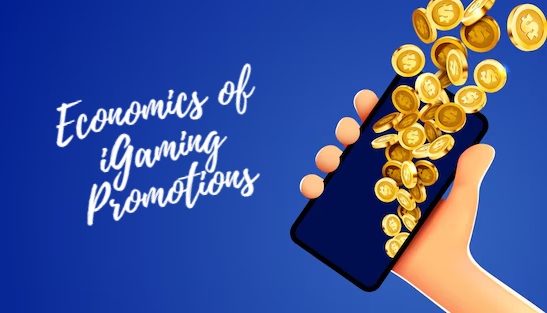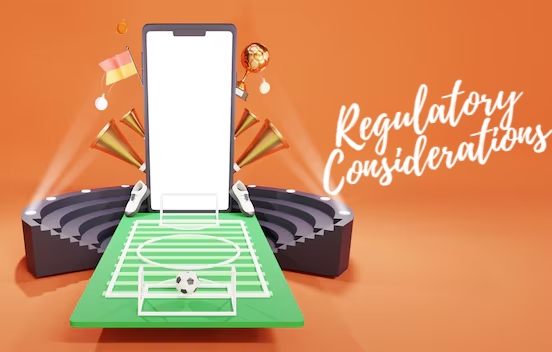How iGaming Promotions Work: From Welcome Offers to Loyalty Rewards

The iGaming industry is one of the fastest-growing sectors in the digital economy. With millions of users worldwide, platforms compete fiercely to attract new players and retain loyal ones. At the heart of this competition are promotions and user incentives—powerful tools that shape player behavior and determine the financial success of operators. For a practical example of how incentives are integrated effectively, check out the Stake promo, which showcases how bonuses and rewards can enhance user engagement while boosting platform profitability.
From welcome bonuses to tiered loyalty programs, incentives are not just marketing tactics. They are carefully calculated economic strategies that balance user satisfaction with long-term profitability. Understanding how these promotions work and why they are designed the way they are provides valuable insights into both player psychology and the business side of online gaming.
Why Promotions Matter in iGaming
Promotions are more than giveaways. They directly influence how users:
- Decide to sign up for a platform.
- Engage regularly with games.
- Spend money and increase deposits.
- Stay loyal for months or years.
For operators, promotions serve two main purposes:
- Customer Acquisition – bringing in new users with appealing bonuses.
- Customer Retention – keeping existing users engaged through ongoing rewards.
Well-structured incentives increase Player Lifetime Value (PLV), which is the total revenue a single player generates during their time on the platform.
Economics of iGaming Promotions

Every bonus, free spin, or loyalty reward comes at a cost. Operators must carefully plan how much they give away versus how much revenue they expect to generate.
Key economic factors:
- Acquisition Costs: How much it costs to bring in a new player with promotions.
- Conversion Rates: The percentage of players who remain active after receiving an incentive.
- Retention Value: How promotions impact repeat deposits and ongoing play.
- Profit Margins: Ensuring bonuses do not exceed the long-term value of users.
Economic Impact of Common Promotions
| Promotion Type | Cost for Operator | Short-Term Gain | Long-Term Value |
|---|---|---|---|
| Welcome Bonus | High (free credit, spins) | Big spike in sign-ups | Moderate if users convert |
| Loyalty Program | Moderate | Ongoing engagement | Strong player retention |
| Referral Bonus | Low to moderate | New users at reduced cost | Expands player base sustainably |
| Time-Limited Offer | Low | Immediate deposit boost | Encourages frequent logins |
Operators who ignore these economic principles risk overspending on bonuses that don’t create sustainable growth.
Understanding User Incentives
User incentives tap into human psychology. Players feel rewarded, valued, and motivated to engage more deeply with the platform.
Common Types of Incentives
- Welcome Bonuses – Attractive sign-up offers like deposit matches or free spins.
- Loyalty Programs – Tiered benefits that reward ongoing play.
- Referral Rewards – Incentives for inviting friends.
- Time-Sensitive Deals – Limited-time bonuses that create urgency.
Psychological Drivers Behind Incentives
- Excitement: Rewards trigger dopamine, making users want to play more.
- Urgency: Limited-time offers push players to act quickly.
- Loyalty programs create a sense of inclusion, giving players the feeling that they are valued members of a community.
- Competition: Tiered structures encourage players to “level up.”
Incentives and User Psychology
| Incentive Type | Player Motivation | Business Benefit |
|---|---|---|
| Welcome Bonus | Curiosity, low-risk trial | Attracts new users |
| Loyalty Rewards | Recognition, sense of status | Builds long-term retention |
| Referral Bonus | Social sharing, peer influence | Low-cost user acquisition |
| Urgency Offers | Fear of missing out (FOMO) | Increases short-term deposits |
Strategies Employed by Platforms
Promotions are not random. They are strategically structured to guide players from sign-up to long-term loyalty.
Welcome Bonuses and Promotions
These act as the gateway to a platform. Common structures include:
- Deposit matches (e.g., 100% bonus on first deposit).
- Free spins on popular slot games.
- Risk-free bets in sports betting.
Most welcome bonuses come with wagering requirements, which ensure users engage with games before withdrawing rewards. This balances user value with operator profitability.
Pros: Increases sign-ups quickly.
Cons: High cost if users don’t stay after the bonus.
Loyalty Programs and Retention Tactics
Loyalty programs reward users for consistent play. These often include:
- Tiered Systems – Players unlock higher benefits as they progress.
- Cashback Offers – A percentage of losses returned to keep engagement high.
- Exclusive Rewards – VIP events, personal account managers, or gifts.
Pros: Builds strong retention and long-term loyalty.
Cons: Requires constant updates to remain attractive.
Example Loyalty Program Structure
| Tier Level | Requirement | Rewards Provided |
|---|---|---|
| Bronze | Sign-up + first deposit | Free spins, small cashback |
| Silver | Regular play | Higher cashback, special offers |
| Gold | High spending frequency | Bigger bonuses, VIP treatment |
| Platinum | Elite level | Personal rewards, exclusive events |
Referral Bonuses
Referral incentives use social influence to expand user bases. A typical structure includes:
- User A refers to User B.
- User B signs up and makes a deposit.
- Both receive rewards (credits, spins, or free bets).
Pros: Low-cost and sustainable.
Cons: Limited impact if users don’t remain active.
Time-Limited Promotions
Short-term offers increase urgency and create frequent engagement. Examples include:
- Double deposit matches for 48 hours.
- Free spin weekends.
- Limited-time tournaments with special rewards.
Pros: Sparks immediate activity.
Cons: Engagement drops once the promotion ends.
Regulatory Considerations

Regulation is one of the most critical aspects of iGaming promotions. Operators must ensure that their offers are legal, transparent, and ethical.
Compliance with Legal Frameworks
- Disclose all terms and conditions (wagering, eligibility, withdrawal limits).
- Avoid misleading claims.
- Ensure offers are fair and accessible.
Failure to comply can result in fines, license suspensions, and reputational harm.
Ethical Concerns in Advertising
Promotions must avoid exploiting vulnerable players. Ethical practices include:
- Responsible gambling messages.
- Age and location restrictions.
- Avoiding language that exaggerates potential winnings.
- Providing self-exclusion and deposit limit options.
This balance between attractiveness and responsibility ensures promotions strengthen trust instead of damaging brand reputation.
Case Example: Stake Promo
Platforms like Stake have successfully integrated incentives into the user experience. Their promotions include:
- Unique welcome packages.
- Regular tournaments with prizes.
- Reward systems tied to player activity.
This structure not only attracts new players but also builds long-term engagement by blending fun with meaningful rewards.
Conclusion
The economics of iGaming promotions reveal how carefully designed incentives influence player behavior and business outcomes. Promotions are not just about free bonuses; they are strategic investments that balance costs with long-term returns.
- Welcome bonuses attract new users, but must be balanced with retention strategies.
- Loyalty programs strengthen long-term relationships.
- Referral bonuses expand reach with low costs.
- Time-sensitive offers drive short-term engagement.
As competition grows, operators must prioritize compliance, transparency, and ethical practices. The platforms that succeed will be those that create promotions not only attractive to players but also sustainable for long-term growth.
In the end, iGaming promotions are about more than short-term profits—they are about building trust, loyalty, and value in an industry where user experience is everything.
